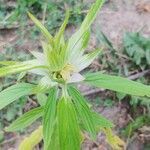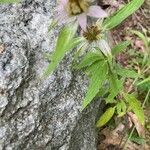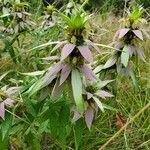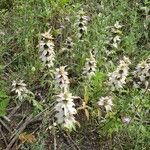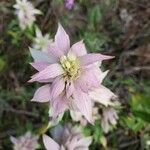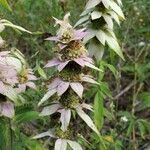Perennial; stems 3–10 dm, thinly canescent; lvs lanceolate or narrowly oblong, 2–8 cm, ± hairy; glomerules 2–5, or solitary on depauperate plants, the bracts lanceolate to ovate, much exceeding the cal, spreading or reflexed, often pale green to nearly white, or purple-tinged; cal 5–9 mm, densely villous in the throat, ± villous or hirsute externally at the summit, the lobes 1–1.5 mm; cor pale yellow, spotted with purple, 1.5–2.5 cm, the strongly arched upper lip about as long as the throat and slender tube together; 2n=22. Dry, especially sandy soil; Vt. to se. Minn., s. to Fla. and Tex., but missing from most of the Ohio drainage. Var. punctata, with the stem pubescent with short recurved hairs and with the lvs glabrous to minutely puberulent beneath, the hairs not concealing the glands, occurs from N.J. to Fla. and Tex., chiefly on the coastal plain in our range. Var. villicaulis Pennell, with the hairs of the stem longer and more spreading, and with the lvs densely hairy beneath, the hairs concealing the glands, occurs from Mich. to e. Minn., s. to Ill. and Mo., and also near Lake Champlain in Vt. and N.Y.
More
A herb. It can grow each year or keep growing for some years. It grows 90 cm high and spreads 40-60 cm wide. The leaves are sword shaped and 8 cm long. They have small teeth. The flowers are yellow to white with purple spots. They grow as 2 or more head like clusters. These occur as one above the other along the flower stem.
